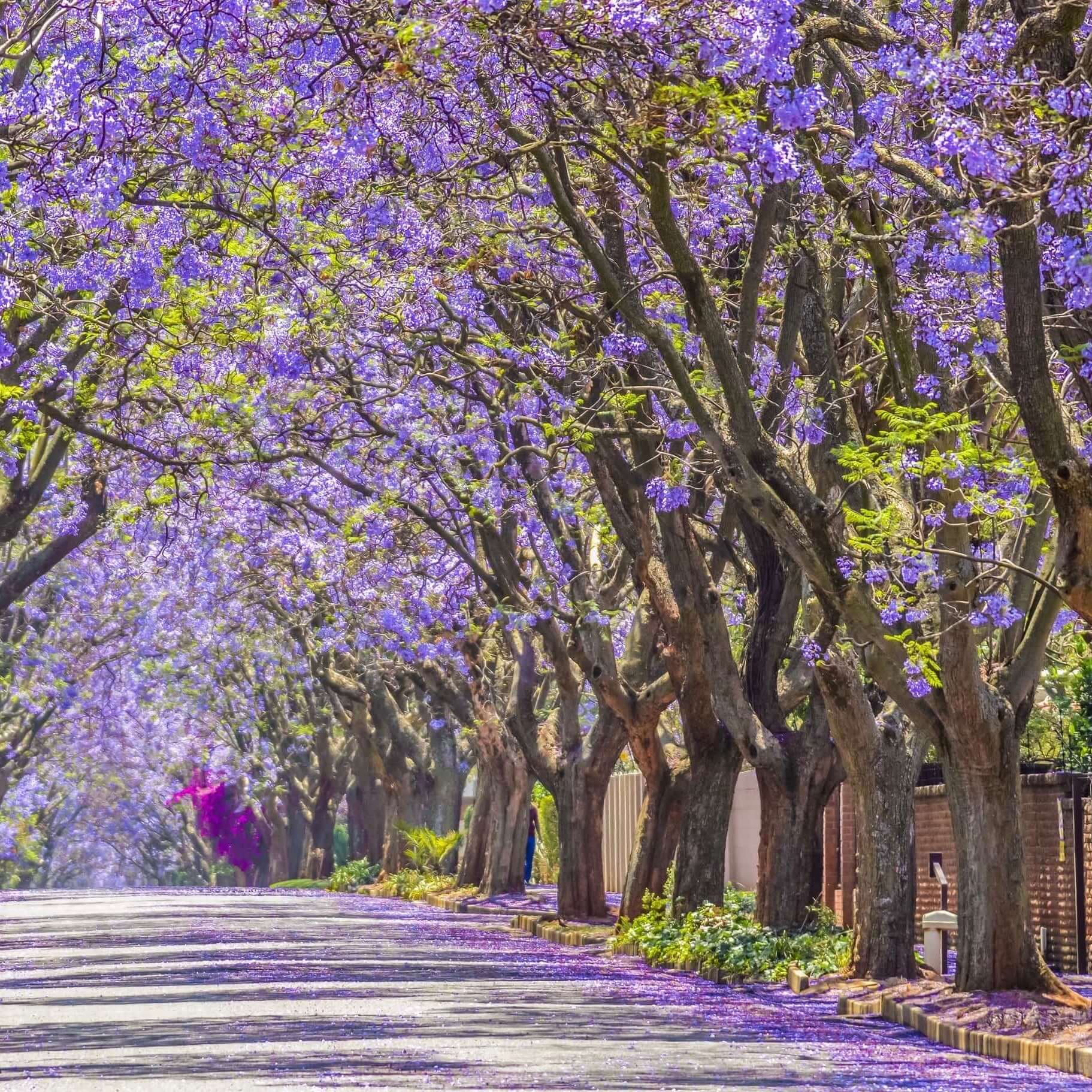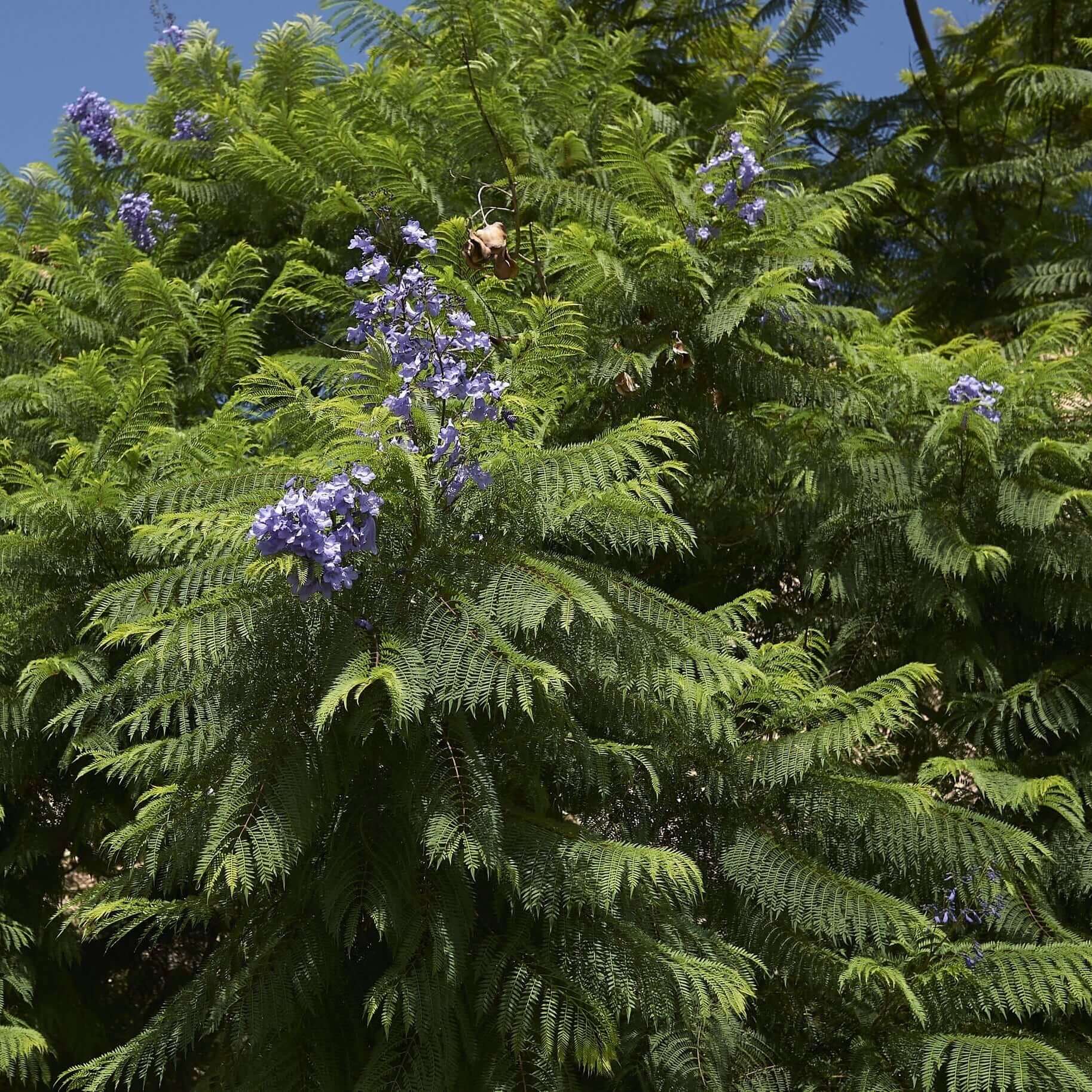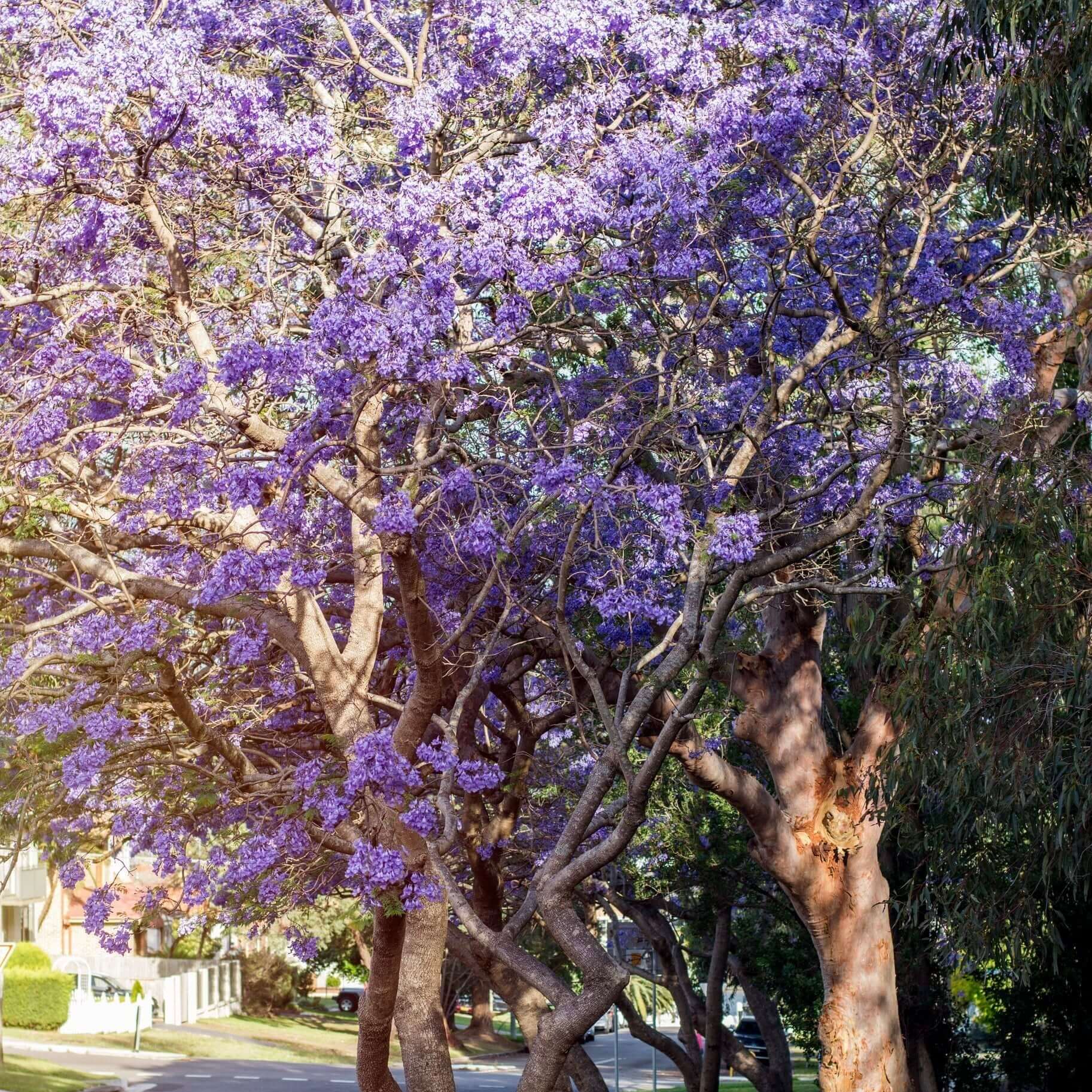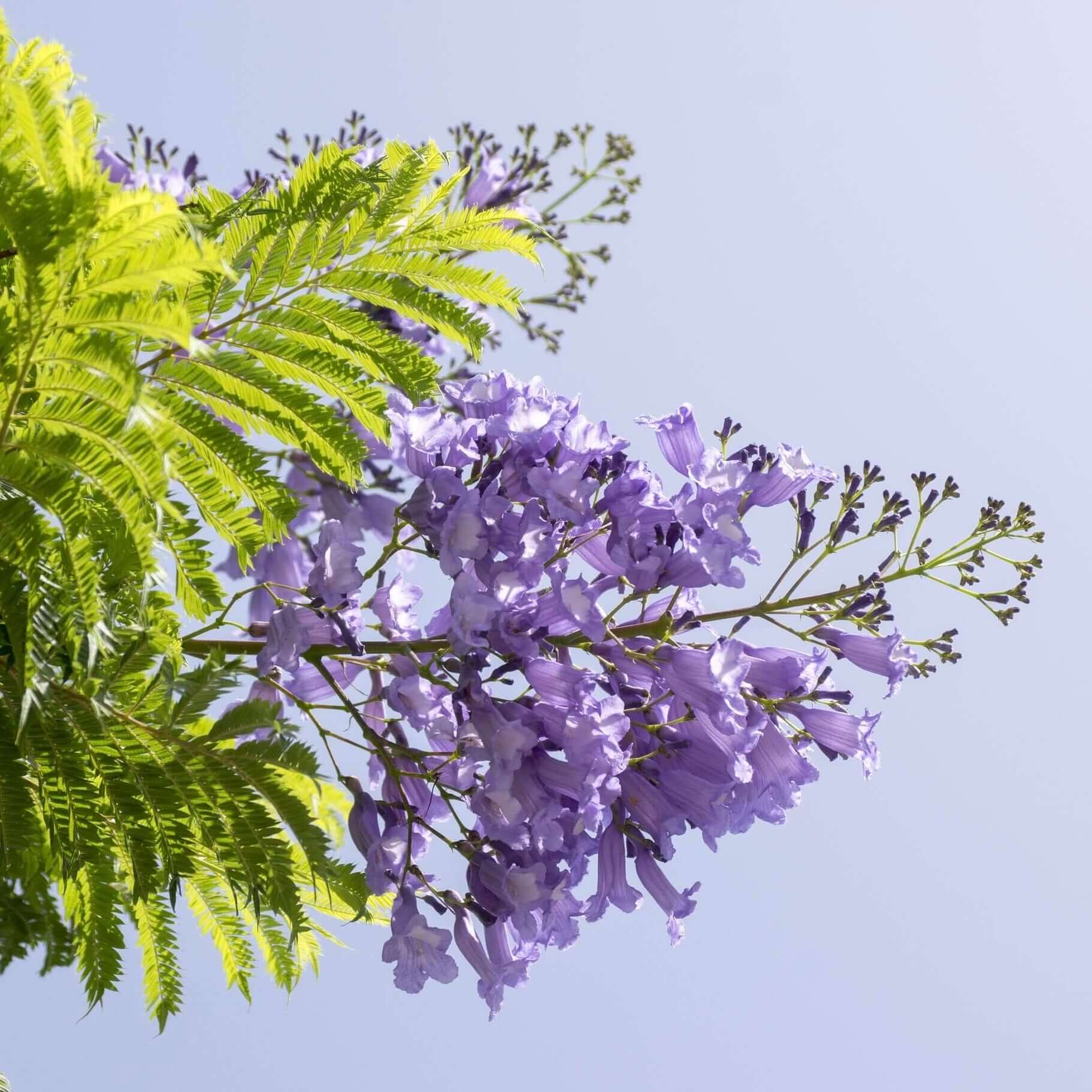
Jacaranda Tree
Jacaranda mimosifolia (J. acutifolia)
Delivery
24-hour money-back guarantee
Free delivery on orders over $349
Big Project? Call 888-444-1126 for bulk rates!
This fast growing deciduous tree (Jacaranda mimosifolia) has a broad irregular open habit of vivid green tropical looking pendulous fern-like foliage. Leaves usually drop in late winter and an abundance of lavender blue flower clusters bloom on leafless, or nearly leafless, branches creating a spectacular show from spring to summer. Makes a striking landscape accent.
Jacaranda trees are generally considered deciduous, depending on the climate. In cooler or more temperate regions, they will typically lose their leaves in the winter. However, in warmer climates or regions with mild winters, they may only partially lose their leaves, making them semi-deciduous. Their leaf drop is often followed by a stunning display of lavender-blue flowers in the spring or early summer. Learn more.
How big does the Jacaranda Tree grow?
When does it bloom and what do the flowers look like?
What kind of light and soil does it prefer?
Does it need pruning or special care?
30-60 ft.
25-35 ft.
Low
Perfect Your Landscape With Expert Help
Customize your yard with confidence. Schedule your free consultation today and bring your outdoor space to life!




